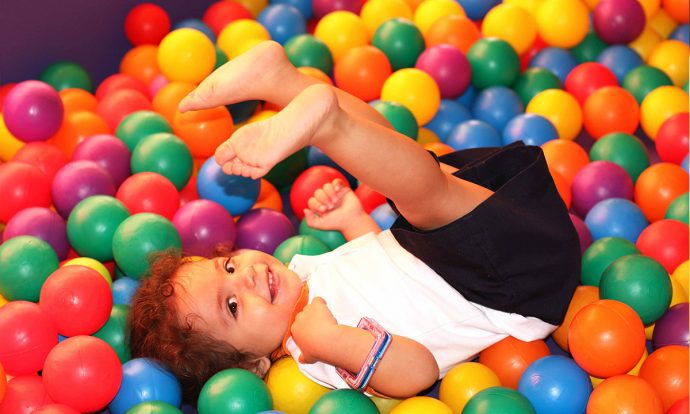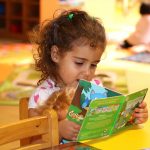-
Evidence indicates that Dubains are becoming increasingly sedentary. Inactivity has a dramatic impact on a person’s health and overall well-being. As early childhood educators, we pride ourselves on using active learning strategies as part of our developmentally appropriate practice. We know that children need learning activities that involve their senses and bodies. Research indicates that children’s activity level during the preschool years is an excellent predictor of their living habits as adults. Children learn and form habits associated with activity level very early in life from their family and other relationships.
Here are some tips you can use at home to keep your child active and healthy.Encourage your child to engage in physically strenuous activity
—running, jumping, climbing, lifting, pedaling vigorously, etc., for a total of at least one hour of daily physical activity. Observe as your child plays outdoors—is he or she really active? Encourage physically strenuous activity by your own example and by playing games or engaging in physical activities with your child.
When your child plays with others, suggest games that can physically involve all or most of the children.
Some group games involve a high level of activity; others are mostly waiting for turns and watching. Think of ways to adapt play to increase activity. For example, divide a large group into smaller groups so children can have more frequent turns.
Indoor activities can be active, too.
Many active learning opportunities only ask children to listen and discuss, such as asking your child questions about what he or she learned in school or what he or she has read. While verbal involvement is important for cognitive and language development, look for ways to physically involve them. Simple adjustments, such as asking them to show you what they’ve learned or to act out a story, can increase activity.
Include activities to engage your child’s senses, such as opportunities to touch and taste as well as to listen, smell, and see.
Young children are sensory learners. They need to engage all of their senses to truly process information. Consider activities that reach beyond seeing and hearing to involve your child in touching and tasting.
Consider ways for your child to explore new physical skills.
Most young children naturally try new things and challenge their physical abilities. Some children are more inclined to be risk takers than others. As parents, we sometimes overprotect our children and hinder their exploration and development. While it is important to keep children from harm, it is also critical that they be encouraged to try new movement skills and to practice challenging tasks.
Find ways to encourage your child to increase his or her endurance and stamina.
Stamina comes with effort and increased exertion over time. Some children will naturally go and go, using every ounce of effort they have. Others need to be encouraged to exert themselves and stretch their capabilities.
Keeping your child active is easy, and it will help them become active and healthy adults. And in the process, you both might just have fun, too!
- About Us
- -- Our Approach to Education
- -- Accreditation
- -- Careers
- Curriculum
- -- Infants: 4 - 12 months
- -- Toddler: Under 2's
- -- Nursery: 2's to 3's
- -- Preschool: 3's to 4's
- Camps & Enrichment
- -- After School Care
- -- Enrichment Programmes
- -- Holiday Camps
- Our Nursery
- -- Meet the Staff
- -- Gallery
- -- Meals at Nursery
- Admissions
- -- Nursery Calendar
- -- Enrolment
- -- Refer a Friend
- For Parents
- -- FAQs
- -- How to Choose a Nursery
- Blog
- Book Tour




